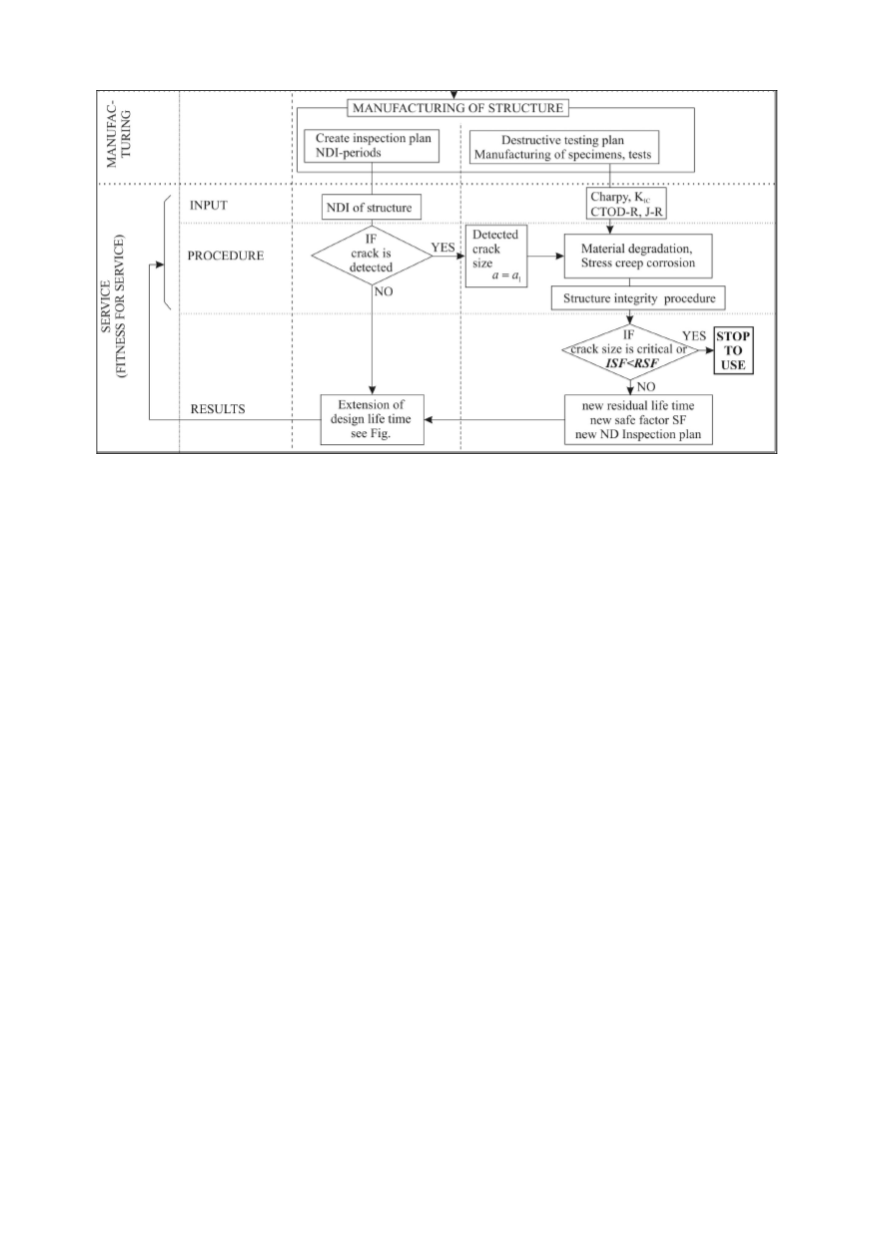

111
Figure 4: NDI plan and plan of specimen’s producing in the manufacturing stage
5. OPERATIONAL STAGE
During the service of a structure it is necessary to follow specified NDI plan. As input
data for structural integrity assessment, NDI plan always contains input data about a
crack (shape, size, location and orientation). In a case of no detected crack, the residual
service lifetime is usually equal to the design lifetime, and the safe usage period is
extended for last period inspection. However, in this case the checking of structure wall
thinning should be done, in order to prevent plastic collapse.
In a case of detected crack (Fig. 5), or established wall thinning, it is necessary to
consider the possibility of structural component replacement. When structural component
replacement is impossible, then a structural integrity procedure should be applied. In this
case, it is also necessary to perform fracture toughness and mechanical testing of the
prepared specimens. They have to be made from the same materials and exposed to the
same or similar loading conditions applied for components. This testing is of special
importance, because the obtained results will show the effect of environment and degra-
dation of the material during usage.
The material degradation and thinning have an effect on crack growth law, as is
schematically shown in Fig. 6. Degradation of material properties reduces service
lifetime. Therefore, it is necessary to determine actual material properties, as bases for
new service lifetime determination. If the new safety factor is found to be lower than the
required safety factor (RSF), then the structure should be repaired or usage arrested.
In a case, where new safety factor (NSF) is higher than or equal to the required safety
factor (RSF), then the new NDI plan has to be specified. After every NDI the whole
structural integrity assessment procedure should be performed. Each time the new safety
factor (NSF) is to be determined and compared to the required safety factor (RSF).
Some level of conservatism should be kept in each performed analysis. This leads to
the service lifetime extension, as is shown in Fig. 7. In some cases, this extension can be
an even longer than the designed lifetime. It enables reliable structural usage during full
service lifetime.


















